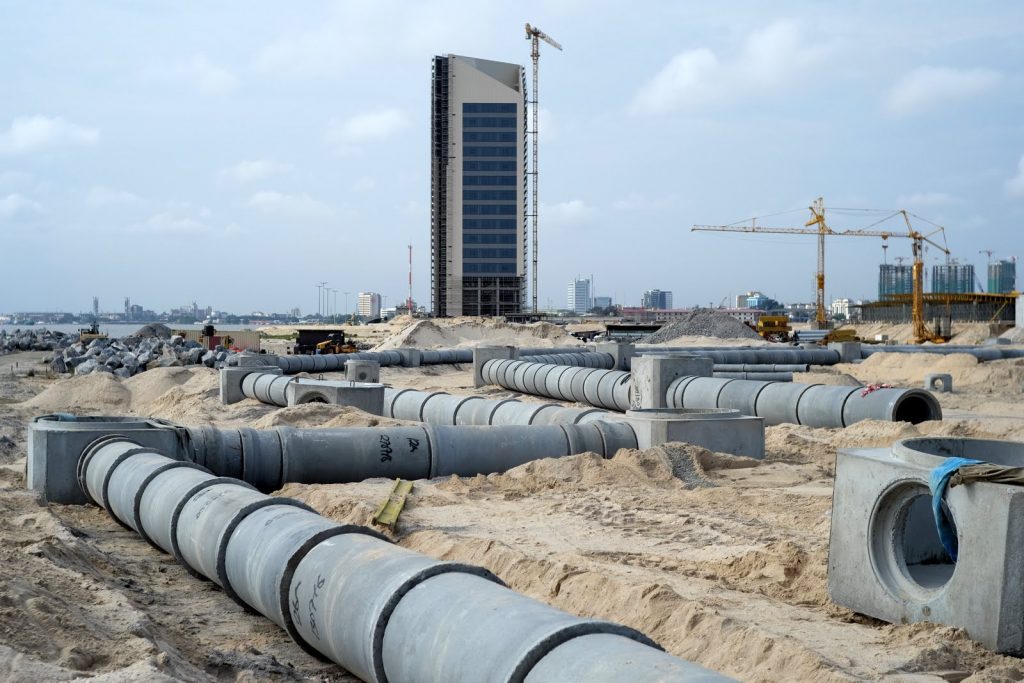Both Makoko and Eko Atlantic each have unique factors contributing to their overall function and success. To effectively evaluate the level of success for each project, we must consider the feasibility of the projects in reference to the local urban space. An infrastructure project must adequately provide the necessary infrastructure and housing for local Lagosians that is sustainable, durable, and equitable.
Makoko: the proposed solution
First looking at Makoko, the primary issue identified is the vulnerability of the structures to weather (Adelekan, 2010). The proposed solutions to resolve the issues aforementioned would also have to ensure that there is significant effort to include the local population within the development of the project (Akinsete et al, 2014). The involvement of the local population is important because the projects must consider the various needs of the local people. Doing so would result in improvements to access to education or appropriate waste disposal as well as ensuring the projects are placed within the cultural frame of reference (Akinsete et al, 2014).
Structural Vulnerability

With the collapse of the floating school, it is evident that many of the structures of Makoko are not able to endure extreme weather (Adelekan, 2010). In order to mitigate this, the use of sustainable, structurally sound, and locally considerate materials may reduce the risk of future building collapses (Akinsete et al, 2014). Furthermore, in order to ensure that the community is self-sufficient and non-reliant on outside sources to make building repairs, it will be important to train and educate the residents of Makoko on how to repair and replace damaged structures.
Eko Atlantic
A solution that can mitigate the elitist neoliberal nature of Eko Atlantic is to introduce public-private partnerships in Lagos that benefit low income housing builders in addition to the pre-existing incentive to build luxury homes. When addressing housing for the urban poor, the government needs to shift from direct provision to “an enabling role, one which facilitates, energizes and supports the activities of the private sector, both formal and informal in housing development.” (Aluko, 2011). Across the continent in Morocco, similar initiatives have proven successful.
Furthermore, a program to transfer technical knowledge learned during construction and sustainability planning from the mega-projects on the ocean to the slums of Makoko boasts huge opportunities. If a local organization were to take on this initiative, it would have a binding effect across the city that connects different classes via technical improvements.

Sources:
Adelekan, I.O. (2010). The vulnerability of poor urban coastal communities to flooding in Lagos, Nigeria. Environment and Urbanization, 22(2), 433-450. Available at http://journals.sagepub.com/doi/abs/10.1177/0956247810380141
Akinsete, E., Hoelzel, F., & Oshodi, L. (2014). “Delivering Sustainable Urban Regeneration in Emerging Nations: Introducing Neighborhood Hotspots.” Journal of Architectural Education, 68(2), 238-45. Available at http://www.tandfonline.com/doi/pdf/10.1080/10464883.2014.937245?needAccess=true
Aluko, O. (2011). Sustainable Housing, Population Growth and Poverty: The
Implications on Lagos Mega City. [online]. Lagos: Journal of Sustainable Development, vol. 4, no. 4, pp. 142. Available at: http://www.ccsenet.org/journal/index.php/jsd/article/view/11605/8240